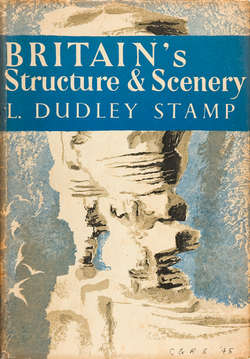Читать книгу Britain’s Structure and Scenery - L. Stamp Dudley - Страница 15
CHAPTER 7
ОглавлениеTHE SCENERY OF THE SEDIMENTARY ROCKS
THE GREATER part of Britain is made up of rocks which were laid down under water as sediments. They were originally deposited in almost horizontal layers or strata and when first raised up above the level of the sea they were approximately horizontal. Some have remained so, but for the most part they have been tilted and folded to a greater or lesser extent. Interbedded with the sedimentary rocks proper are limestones, as well as lava flows and beds of volcanic ash. Whilst some limestones are built up of fragments of shells and are thus sediments, others are of the nature of chemical precipitates and again others are coral reefs which have grown in situ. Hence the distinction from sediments proper.
Whilst some of the members of the sequence retain the same general characters through a great thickness—the Chalk, for example, in places is nearly 1000 feet thick—it is a common feature for strata of different types—clays, shales, sandstones and many others—to succeed one another with almost bewildering rapidity so that each bed may be only a few feet, or even a few inches, in thickness. This is of great importance since each bed may, and usually does, differ in its resistance to atmospheric and other forms of weathering. It is this variation in ability to stand up against the denuding forces of nature which is largely responsible for the intimately varied scenery of so much of Britain and the absence of monotony even in the lowlands. It is also largely responsible for the remarkable and rapid variations in the sea coasts of the British Isles.
Before considering the land forms which are characteristic of the sedimentary rocks it will be well to recall a few of the salient features of the rocks themselves. The majority show evidence of bedding planes, indicating that they were deposited in layers. This is generally true of the harder rocks such as the sandstones, but bedding planes may be absent in the clays which form an amorphous mass. A few sands and sandstones which were deposited in shallow waters under the influence of currents have a curious type of bedding consequent upon current action and hence known as current bedding or false bedding. It is best understood by reference to the picture, Plate 10 and the diagram Fig. 37.
The bedding planes tend to form planes of weakness along which the rocks split easily. When a hard sandstone splits easily in this way it is known as a flagstone. Because of this property the Caithness flagstones of Old Red Sandstone age were the favourite paving stones for London and other cities till the introduction of artificial stone for the purpose. Some rocks break into such thin slabs that they can be used for roofing and though true slates have a different origin such “slates” as those of Stonesfield and Collyweston are actually thinly bedded limestones. The vogue for “crazy paving” in gardens has introduced many townsmen to a considerable variety of rocks which split easily along the bedding planes. Rocks which do not split more easily along the bedding planes than in other directions are referred to by masons as “freestones” because they are freely worked into building blocks. Even so, as the expert knows, if a freestone block is laid on its edge it is liable to weather more rapidly than if placed as it was quarried. The term freestone is applied both to sandstones and to limestones.
In addition to this character of planes of weakness parallel to the bedding, the majority of the harder rocks have cracks or planes of weakness at right angles to the bedding along which they split easily or along which they are easily attacked by denuding agencies. These planes are known as joints or joint planes and there may be more than one series. In the latter case the major series is known as that of the master joints. When a rock such as a hard sandstone is well jointed it often weathers into vertical crags—a feature exhibited to perfection by the Torridonian Sandstones of the north-west of Scotland (Plate IB). The craggy sandstone cliffs of such heights as Stac Polly afford interesting plant and animal habitats. Although the jointing in limestone is partly of a different origin, being due to some extent to solution of the rock, the effect is broadly the same (Plate 6). Very naturally jointing and bedding both influence to a great extent the character of sea-cliffs and river cliffs. A well-developed system of joints results in vertical cliffs ; where there is at the same time a dip of the rocks seawards or riverwards the combination of circumstances is such as to encourage the detachments of great blocks and the creation of landslides.
FIG. 24.—Diagrammatic Explanation of the Peneplanation shown in Plate 5A A typical example of submarine peneplanation, with a subsequent uplift of the whole surface. As a result the almost level surface of the ground is independant of the underlying geological structure.
Sedimentary rocks when laid down are almost horizontal so that the simplest case to consider is when horizontal strata are raised up and subjected to denudation. Rivers cut into them and between the young
FIG. 25.—Diagrammatic Explanation of the Flat-topped Hills of Plate 5B In contrast to Fig. 24, the flat tops of the hills here follow the bedding of the underlying Upper Greensand which rests almost horizontally, but unconformably, on underlying rocks which dip to the east.
